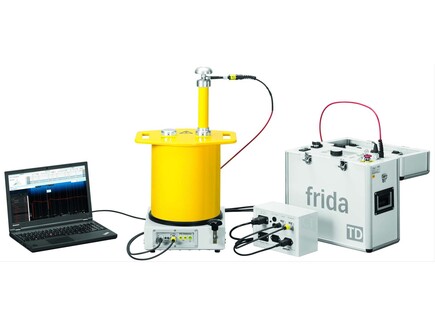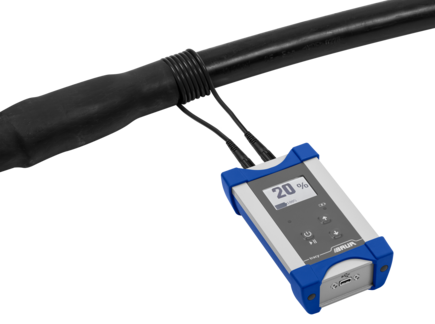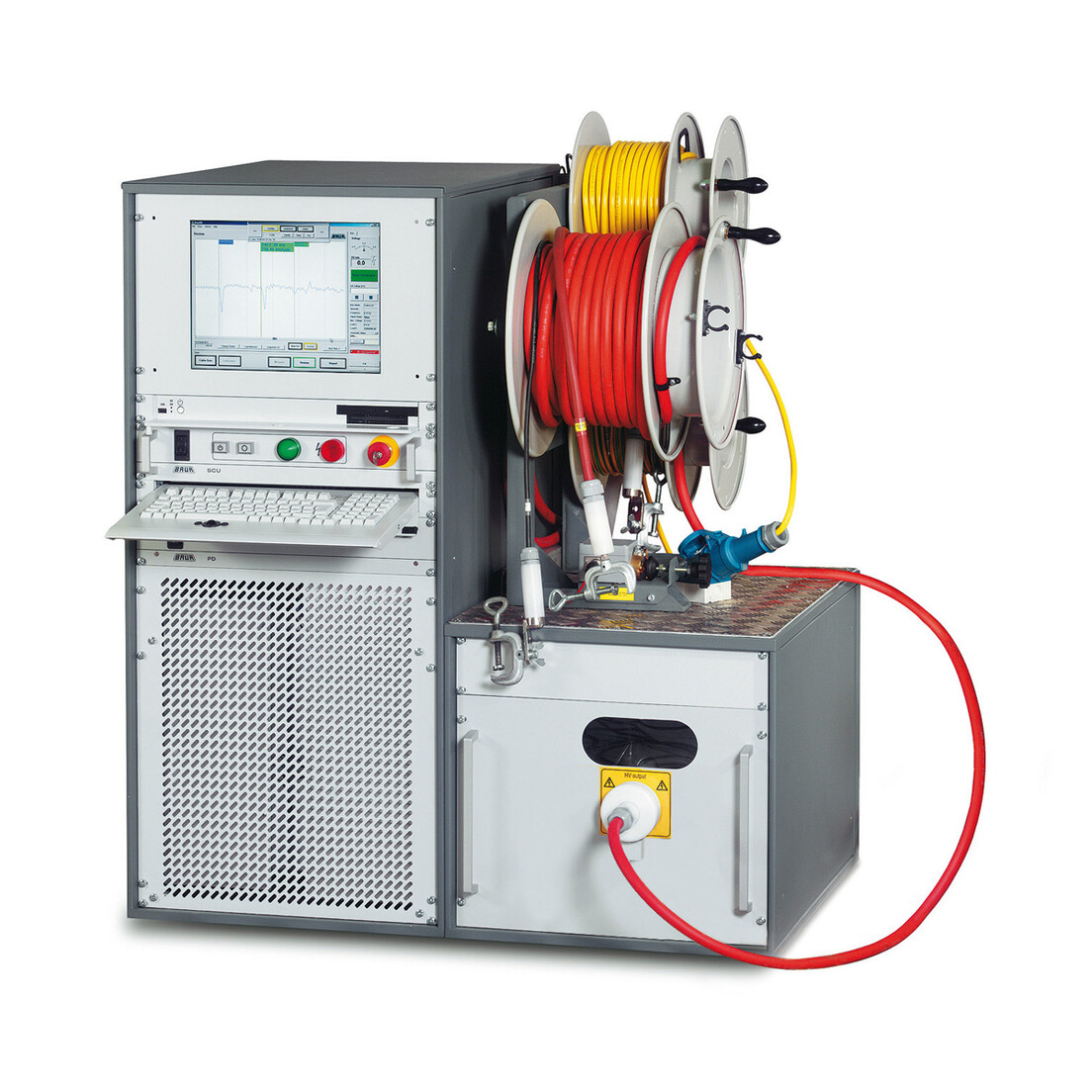PHG 80 TD
VLF diagnostics system
Cable testing and diagnostics with the BAUR PHG 80 TD
The combination of the PHG 80 programmable test generator with the BAUR dissipation factor measurement system produces the cable testing and diagnostics system PHG TD. It is operated via PC control. Dissipation factor measurement and diagnostic testing sequences can be programmed in the menu, after which the dissipation factor measured values are automatically determined in various voltage steps and a final evaluation is conducted.
- Biggest dynamic range of tan delta measured values from 1 to 10-4 with a cable capacitance >10 nF to 20 uF
- High resolution +/- 1x10-5 applicable even in new PE/XLPE cables
- Insensitive against interferences due to complete mains separation
- Lowest time required for assessing a medium-voltage cable (3-phase approx. 1 hour)

Cable faults in medium-voltage networks are among the situations that no one wants to experience – yet they occur time and time again. Downtime, high time pressure and critical infrastructures that need to be up and running again quickly: these are the challenges you face. In this environment, improvising is not an option. What you need is precise data, a clear approach and technology that provides you with the right answers at all times. With PD-TaD, cali and tracy, you have a measuring system that was developed precisely for these scenarios: reliable cable diagnosis, clear results and fast, targeted fault location. Combined with the innovative BAUR Software 4, it is an unbeatable system.
How to get started – with structure instead of stress
1. Start diagnostics with PD-TaD
Thanks to the combination of a portable diagnostic device, VLF testing system and BAUR software 4, you can see the PD level, its position and the dissipation factors – comprehensively, reproducibly and documented.
2. Ensure calibration with cali
In the next step, calibrate your measurement setup with the cali calibrator. BAUR Software 4 automatically identifies the calibration, adopts the limit values and documents the calibration process.
3. Pinpoint cable fault locations
Have you discovered a critical location in the cable? Then connect the PD signal coupler to locate the partial discharge with the utmost precision.
1. Start diagnostics with PD-TaD
Set up the portable diagnostics system – the heart of the PD measurement. In just a few simple steps, you connect:
- PD-TaD with the cable via PD coupling units
- VLF diagnostics system PHG 80 TD PD with the cable for the power supply
- Laptop with the entire system for controlling the entire diagnostics process
And the software?
BAUR Software 4 controls the entire measurement process. You enter cable data, define test sequences and carry out measurements automatically – without any manual readjustment.
You can see the following live in the software:
- Partial discharge levels, positions, dissipation factors
- Voltage curves and trend displays
- Visualisations with phase resolution – even during the VLF test

The condition analysis is now running: complete, reproducible and documented.

2. Ensure calibration with cali
Before drawing any further conclusions, calibrate the measuring setup in accordance with standards using the BAUR calibrator cali. Connect the calibrator to the cable and PD-TaD using the cables and clamps supplied. With just a few keystrokes, you can select the charge and polarity and send calibration pulses – precisely, quickly and reliably.
Technology in the background:
- Charge range: 100 pC – 50 nC, polarity switchable
- Rise time: < 25 ns, operating time: up to 60 h
- Robust housing (IP54), large display with automatic illumination
BAUR Software 4 automatically recognises the calibration, adopts the reference values – and documents the calibration process.
This tells you that the values are correct and the measurement is reliable.
3. Pinpoint the cable fault location with tracy
You have discovered a critical point in the cable – now expose this area.
This is where tracy comes in: the PD signal coupler is placed on the outside of the cable, directly above the suspected fault zone. It couples a defined signal into the cable without contact – inductively, without damage. Use the PD-TaD or a PHG TD/PD to compare whether the induced signal matches the pre-located TE.
Technical specifications:
- Pulse width: 25 ns, clock rate: 20 ms – 5.1 s
- Compact (110 × 213 × 42 mm), weighs only 550 g
- Battery operation, runtime: approx. 20 h, protection class: IP54
With BAUR Software 4, you can overlay both signals and visually confirm the match.

This confirms the partial discharge location. Not approximately, but precisely.
BAUR Software 4: the invisible connection
BAUR Software 4 works behind the scenes, whether in the background or actively on your screen:
✔ Plan, perform and evaluate measurements
✔ Visualise and synchronise live data
✔ Link all measurement results to cable data
✔ Central documentation & report generation
✔ Trend analyses for long-term network evaluation
✔ Whether in the field or in the measurement vehicle: you have all your data in one place – accessible at any time.
Everything interacts – step by step:
- PD-TaD + VLF generator connected to the cable for diagnostics ( operated by BAUR Software 4)
- cali connected to the cable + PD-TaD for calibration (documented by BAUR Software 4)
- tracy conntected to exposed cable section for signal coupling (compared in BAUR Software 4)
Your benefits: Systematic. Secure. Portable. Digital.
With PD-TaD, cali, tracy and BAUR Software 4, you can work comprehensively – from the initial suspicion to the documented fault rectification.
Product information
Literature
Suitable training courses:

14 to 16 April 2026
Advanced course Cable Fault Location (EN)
in Leiden, the Netherlands


